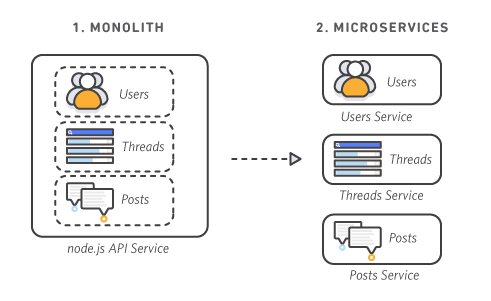Introduction
In the modern digital landscape, it is crucial to have software applications that are scalable, modular, and independent. This is where microservices architecture comes in. Microservices are individual services that communicate with each other through APIs, providing independent, scalable, and resilient software applications. In this article, we will explore how to use .NET for building microservices architecture.
What are microservices?
Microservices are a software development approach that breaks down an application into a set of smaller, independent services that communicate with each other through APIs. Each microservice performs a specific business function and is designed to be modular, scalable, and resilient.
Advantages of using microservices
Using microservices architecture provides several benefits, including:
- Scalability: Microservices architecture allows for scaling of individual services independently. This helps optimize resource utilization and reduce costs.
- Resilience: When a microservice fails, it does not bring down the entire application. Other services continue to function independently, providing resilience to the overall system.
- Modularity: Microservices are designed to be independent, self-contained, and focused on specific business functions. This helps improve code quality, reduce complexity, and make it easier to maintain and update the system.
- Flexibility: Microservices allow for flexibility in technology choices, as each service can be developed and deployed independently.
Using .NET for microservices architecture
.NET is a popular framework for building microservices architecture. Here are some reasons why .NET is an excellent choice for microservices:
- Asynchronous I/O: .NET is designed to handle a high number of connections with low overhead. This makes it perfect for building scalable microservices.
- Lightweight: .NET is lightweight and has a small footprint, which allows for efficient resource utilization and makes it easier to deploy and scale.
- Community: .NET has a large community of developers, which means there are plenty of tools and packages available to help build microservices.
- C#: .NET is built on C#, which is a popular language that many developers are familiar with. This makes it easy to get started with .NET and to find developers to work on the system.
Best practices for using .NET for microservices architecture
To ensure that you get the most out of .NET for microservices architecture, here are some best practices to follow:
- Keep each microservice small and focused on a specific business function. This helps improve code quality, reduce complexity, and make it easier to maintain and update the system.
- Use asynchronous I/O to handle a high number of connections with low overhead. This helps to improve scalability and performance.
- Use a lightweight framework such as ASP.NET Core to build APIs. ASP.NET Core is easy to learn and provides a robust set of features that make it ideal for building microservices.
- Use a message broker such as RabbitMQ to handle inter-service communication. This helps to decouple services and provides a reliable way to exchange messages.
- Use containerization technology such as Docker to package and deploy microservices. This helps to ensure consistency across different environments and makes it easier to manage and scale the system.
Conclusion
.NET is an excellent choice for building microservices architecture. Its lightweight, scalable, and asynchronous I/O makes it ideal for building modular, independent services. By following best practices such as keeping each microservice small, using asynchronous I/O, and containerization, you can build a scalable, flexible, and resilient microservices architecture.
